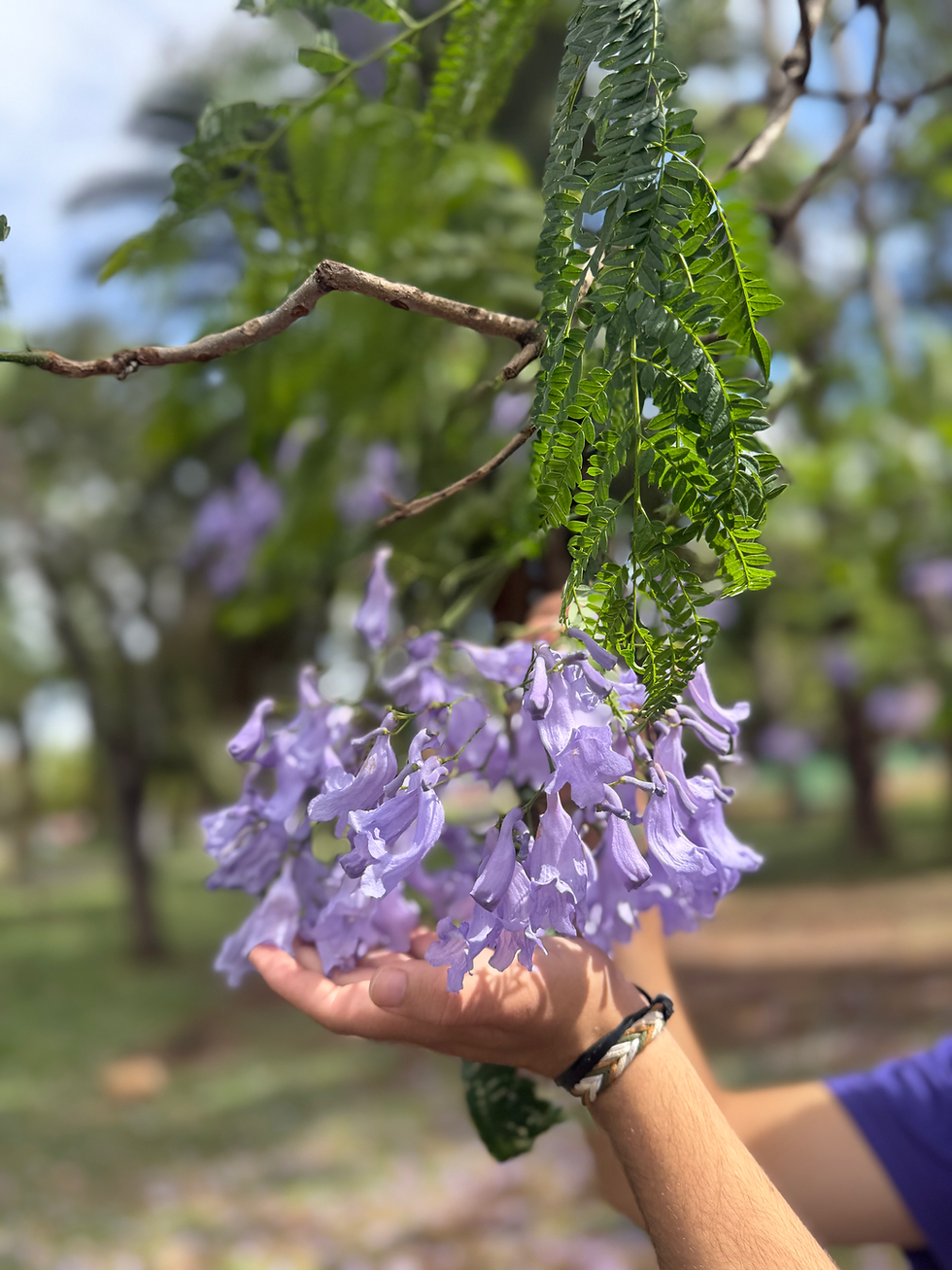Climate change is shortening the flowering and fruiting period of Cerrado species.
- cbioclimamidia

- 1 hour ago
- 4 min read
Por: Gabriela Andrietta
During COP30, held in Belém (PA), discussions about the challenges involving climate change are at the center of debates, reinforcing the importance of science for understanding how ecosystems are being impacted by these transformations.
Although studies evaluating the effects of climate change on tropical vegetation and its phenology are still scarce, long-term research allows for a detailed analysis of significant changes in the phenology (the timing of recurring events in the life cycle, such as flowering and fruiting) of plants. A study conducted by researchers from Unesp revealed that climate change is altering the reproductive rhythm of Cerrado plants. Over 15 years of monthly observations (2005–2019), scientists found that the duration of the flowering and fruiting period of the species decreased significantly, especially among those that depend on pollinators, mainly bees, to reproduce.
The article "Climate-induced shifts in long-term tropical tree reproductive phenology: Insights from species dependent on and independent of biotic pollination," recently published in the journal Functional Ecology, analyzed 31 species of trees and shrubs from the Cerrado sensu stricto in an area of native vegetation in Itirapina (SP). The work is part of the Long-Term Phenological Monitoring Program of the Cerrado, from the Phenology Laboratory of Unesp Rio Claro, coordinated by Professor Patricia Morellato, and is part of Amanda Eburneo Martins' doctoral thesis.
Professor Patricia Morellato, from Unesp Rio Claro and director of CEPID (Center for Research in Biodiversity and Climate Change), CBioClima (FAPESP Process number 2021/10639-5), explains that the phenology of this long-term project is more detailed and complex than those usually carried out in temperate countries. According to her, “the methodology we use here in the tropics is different from that applied in the northern hemisphere. There, they use what they call, for example, First Flower and First Leaf Bud. They simply note these occurrences punctually, not involving marked individuals in most cases. It's just a chronological observation throughout the year. Obviously, they have series spanning many decades, but the phenology we do here is much more detailed. We go to the field at least once a month and mark all the phenophases: the first bud, the open flower, the first green fruit, the ripe fruit, the first leaf bud, the proportion of new leaves, leaf production, and leaf fall. In other words, we observe many more phenophases and continuously monitor marked individuals. This brings greater detail and sophistication to the data, although, of course, in smaller areas. On the other hand, this type of monitoring allows for a more consistent analysis over the years.”
This study clearly indicates that we are observing plant responses related to recent climate changes, such as increased temperatures and the lengthening of the dry season, which is becoming increasingly drier and longer, explains Patrícia.
According to Amanda Eburneo Martins, first author of the article, "species that depend on animals for pollination showed a reduction in the duration of flowering over the 15 years, in response to decreased rainfall. In fruiting, the phase in which fruits develop and ripen, the duration decreased in both pollinator-dependent and pollinator-independent species, being affected by the increase in average temperature and the reduction in relative air humidity."
This decrease occurred mainly at the end of the reproductive period, since the start and peak dates of flowering and fruiting remained stable. This indicates that, although plants continue to begin their reproductive cycle at the same times of year, they are flowering and fruiting for a shorter period.
"With less flowering time, there is less availability of floral resources for pollinators of these plant species, such as bees. Similarly, the reduction in the duration of fruiting can compromise the establishment of new plant individuals and decrease food resources for frugivorous species that feed on fruits and disperse seeds, which can affect plant regeneration and the balance of the Cerrado ecosystem," explains the author.
Another relevant result is the decline in co-flowering—that is, the overlapping of flowering periods between different species. This pattern was observed in both pollinator-dependent and pollinator-independent plants. As most of the species studied are pollinated by bees, the reduction in co-flowering can increase competition by pollinators for plants and by plants for pollinators, since there are fewer flowers available simultaneously.
Despite these changes, the study finds that the reproductive success of the community remained stable throughout the analyzed period, indicating that, to date, the Cerrado species studied demonstrate some resilience in the face of recent climate changes. This resilience may be related to ancient evolutionary adaptations, developed during extreme climatic periods of the past, such as the Pleistocene oscillations [a geological period that extended from approximately 2.6 million to 11,700 years ago, marked by intense climate change] and which today may confer an adaptive advantage in the face of current climate change.
The Cerrado, in particular, is one of the regions most impacted by environmental transformations, marked by intense agricultural expansion, adds Morellato. “This expansion advances northward, forming the so-called ‘arc of devastation,’ which represents the border between the Cerrado and the Amazon Rainforest, in the central region of Brazil. Therefore, it is essential to understand what is happening to the Cerrado and to recognize its importance throughout its distribution area.” According to the researcher, more detailed climate data, integrated with information on plant and animal communities, are the focus of a new article that should be published soon. Other studies are also being developed. “We are conducting similar analyses in other types of forests, such as the Amazon and native grasslands. We already have even longer series of Amazonian data, and this will be extremely relevant to understanding the effects of climate change on different Brazilian biomes.”

Ouratea spectabilis (espécie nativa do Cerrado)
Crédito da fotos: Amanda Eburneo Martins.



Comments